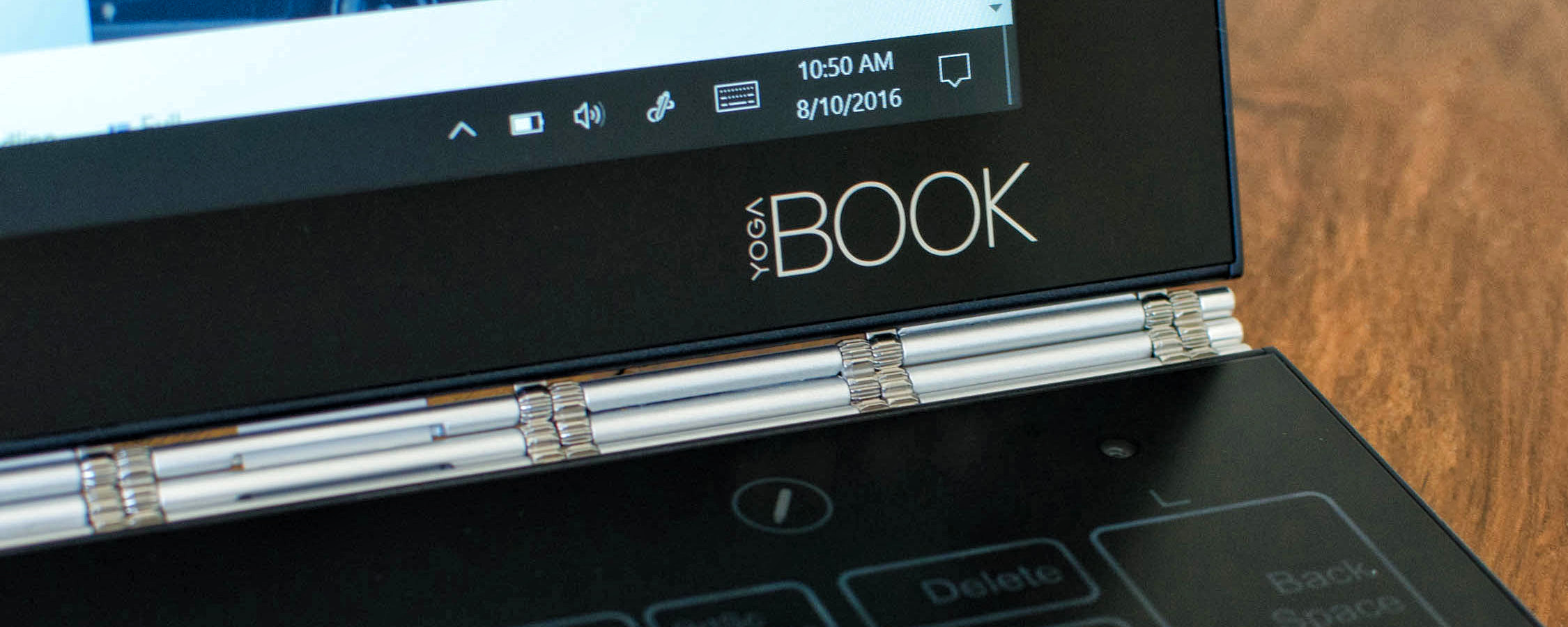Hardware Overview and System Performance
The Lenovo Yoga Book's main source of performance is the Intel Atom x5-Z8550, which is an entry-level SoC from the company's Cherry Trail line. Built using a 14nm process, the Z8550 features four Airmont CPU cores and four threads, 2 MB of L2 cache, and a "scenario design power" of 2W. This is essentially Intel's competitor to tablet processors from ARM vendors, although, of course, the entire Atom catalogue supports x86 instructions.
The x5-Z8550 is clocked at 1.44 GHz with a burst frequency of 2.40 GHz, while the Intel HD Graphics 400 GPU inside is clocked up to 600 MHz. This processor only supports dual-channel LPDDR3 memory, so we're limited to 25.6 GB/s of bandwidth, and the Yoga Book tops out at 4 GB of RAM. While Cherry Trail processors do support USB 3.0, we're not getting it on the Yoga Book due to the choice of a micro-USB port.
The Yoga Book also supports Wi-Fi 802.11a/b/g/n/ac on 2.4 and 5.0 GHz bands thanks to a Broadcom chip, plus Bluetooth 4.0 support. As for 4G LTE support, the Yoga Book is split into two models: one that supports most EMEA regions, while the other supports the Americas. In either case there is a good smattering of bands for cellular connectivity on the go.
The main issue with the Yoga Book's performance is that the Intel Atom processor is not really fast enough to run Windows 10 applications that you'd normally use on a laptop or desktop. The Yoga Book is fine for running UWP apps like OneNote, Edge, and the UWP Office suite, but it suffers under the weight of more intensive applications like full desktop Chrome, Photoshop, and large Excel spreadsheets.
To me, it seems like the Yoga Book was designed primarily as an Android device, with Lenovo opting to use an Intel Atom SoC so they could also produce a Windows 10 variant. I have no doubts that the x5-Z8550 with 4GB of RAM is plenty for Android apps, but on a Windows machine with clear aims of being a productivity and creativity device, I'd prefer to see faster internals
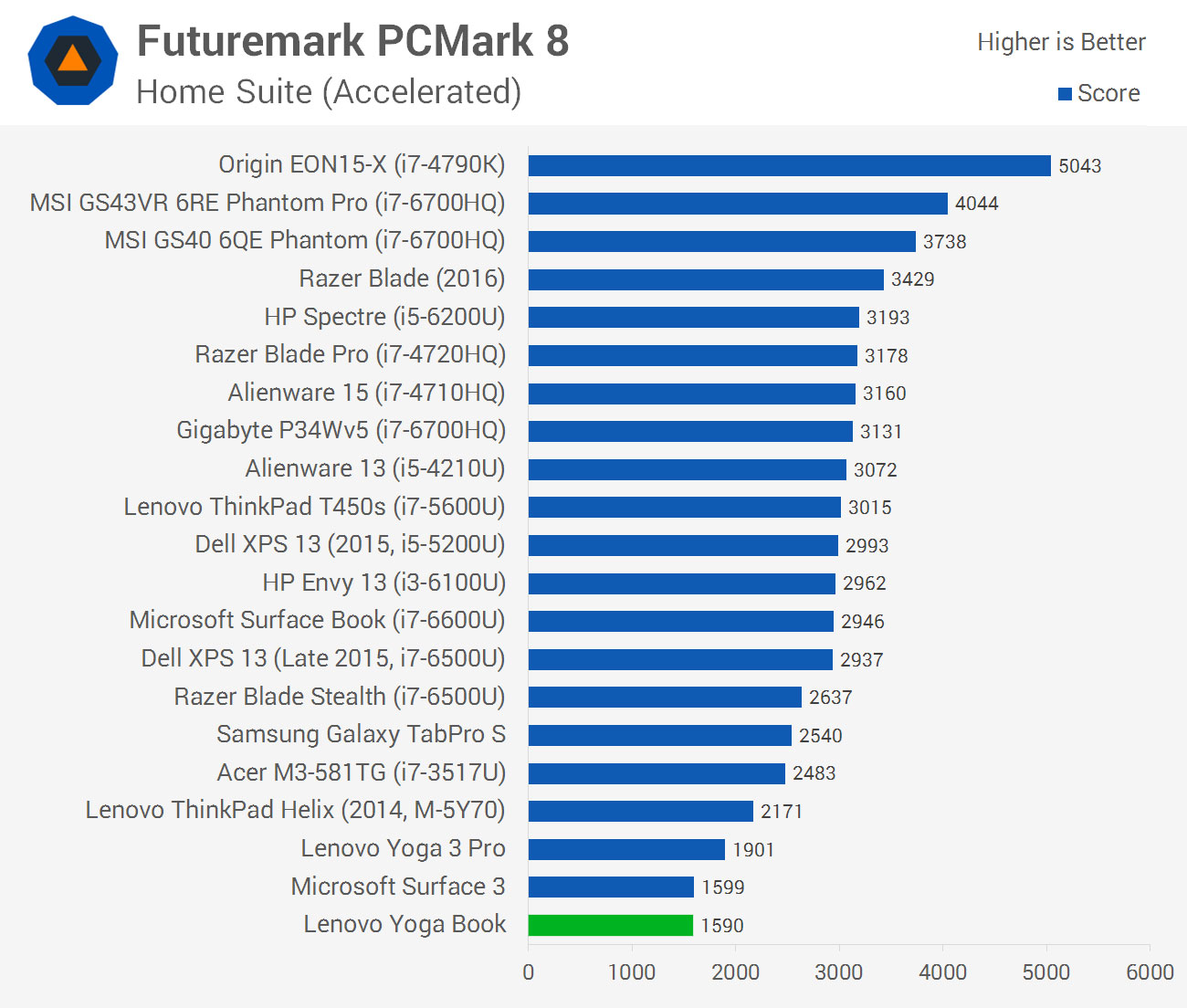

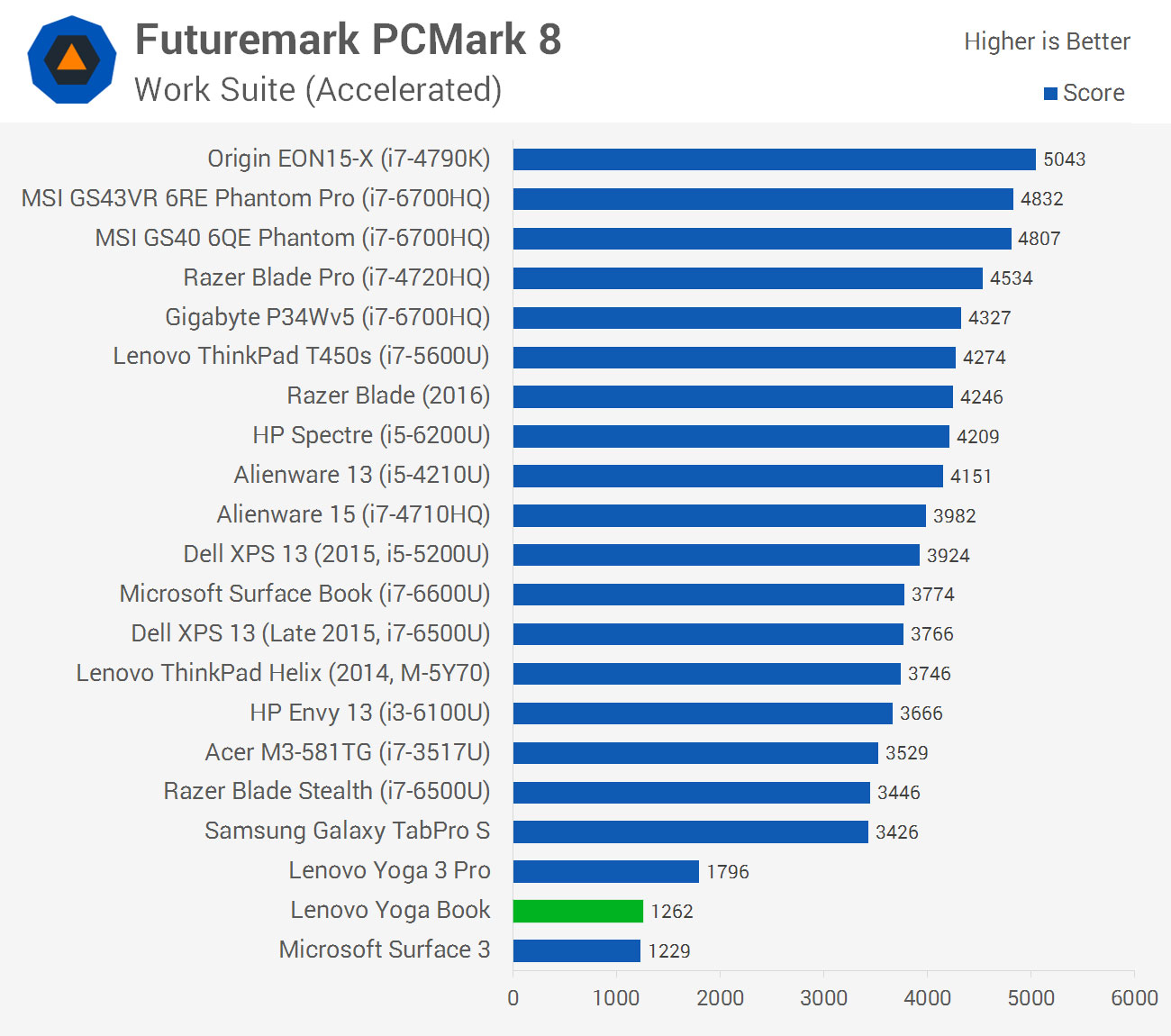

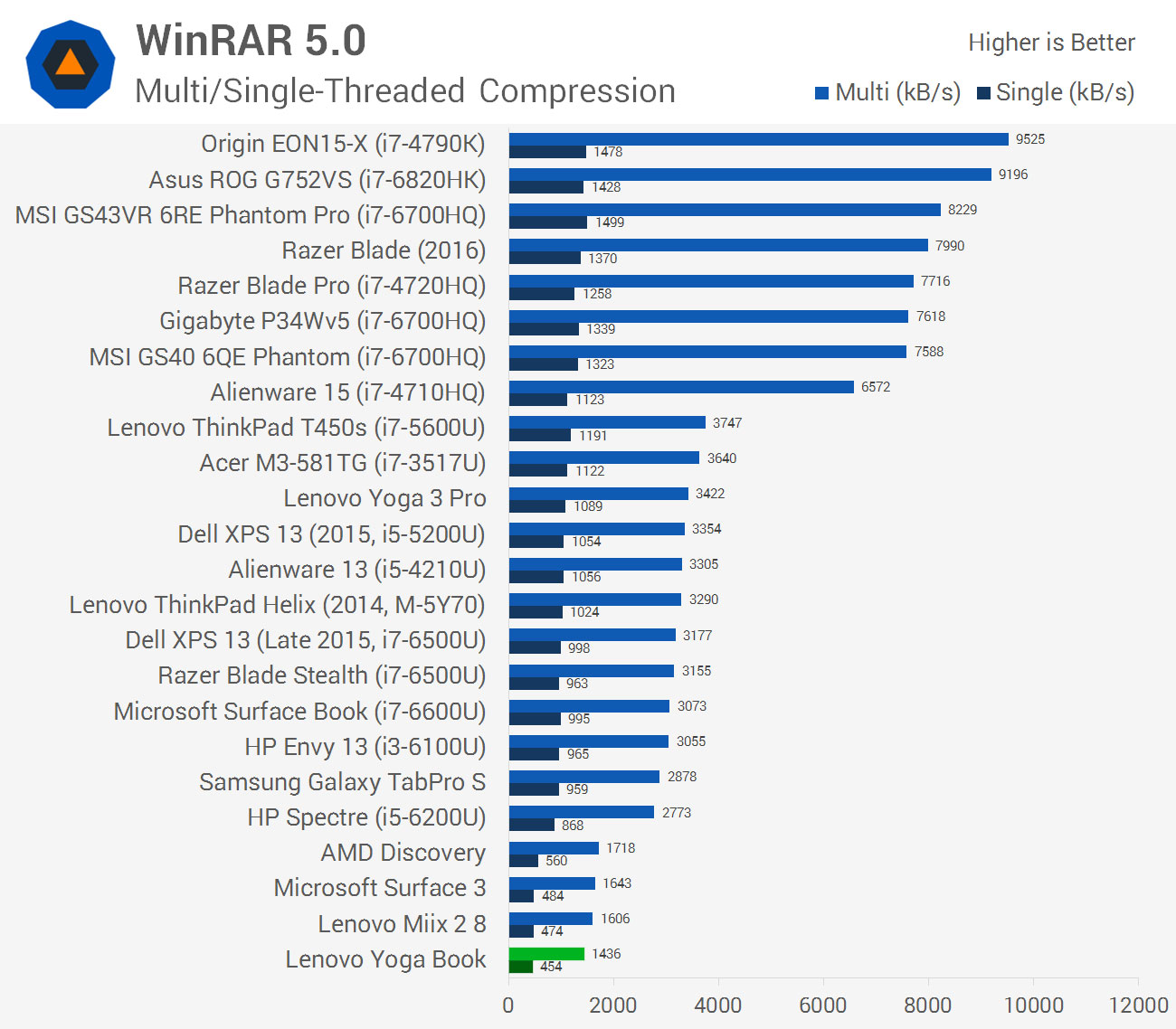
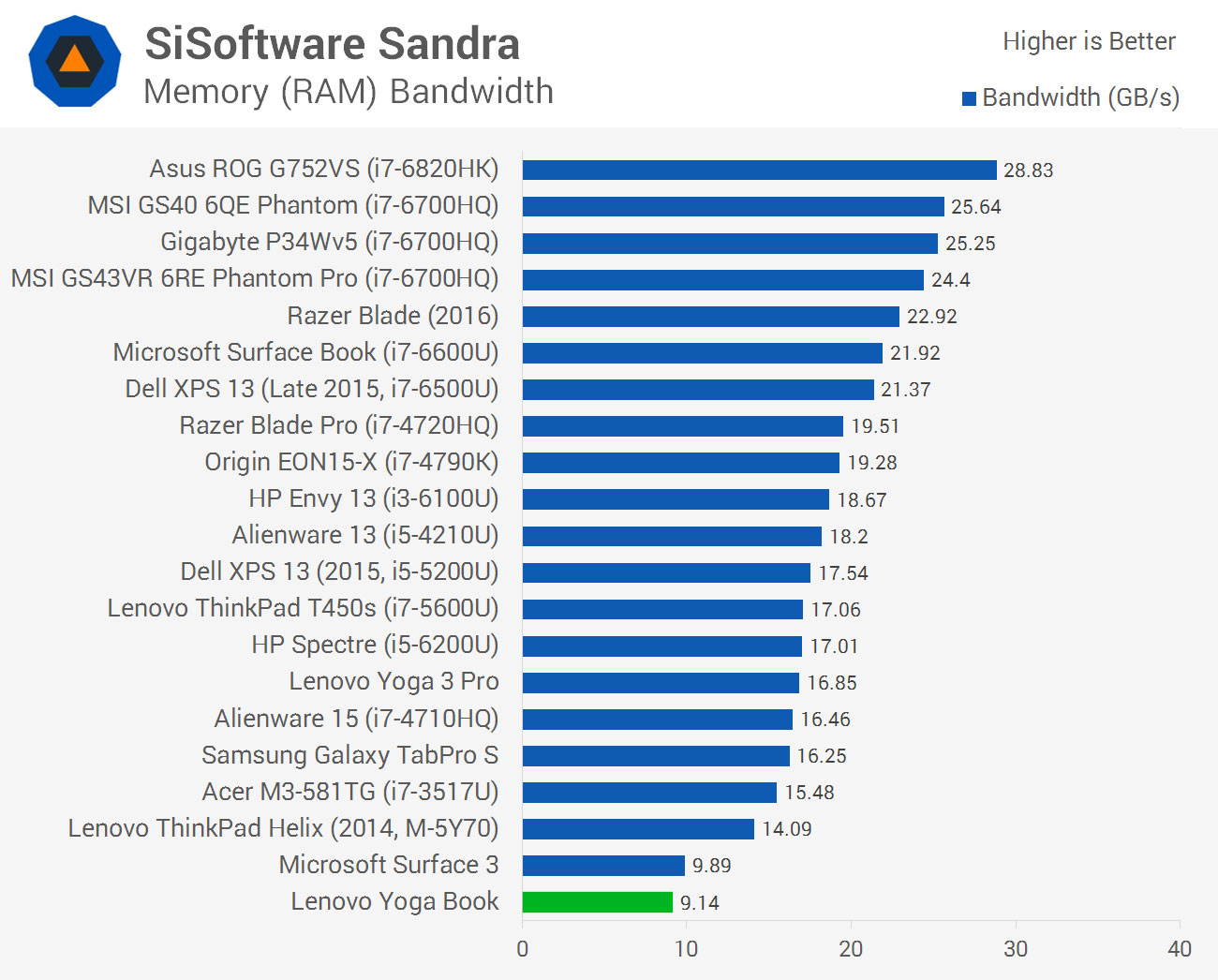
In the usual range of benchmarks we run on Windows devices, the Samsung Galaxy TabPro S, which uses Intel's Core m3-6Y30, offers almost twice the CPU performance of the Atom x5-Z8550. We're not even looking at a fully-fledged 15W Core processor, but Intel's entry-level Skylake Core M CPU which some people feel is a 'slow'. I don't believe Core M is too slow for everyday tasks, but the x5-Z8550 certainly struggles.
The Microsoft Surface 3, which I reviewed last year with the higher-clocked Atom x7-Z8700, recorded seven percent better performance. A current-generation laptop with an Intel Core i5-6200U clocks in at 140% faster in general.
